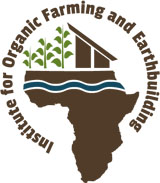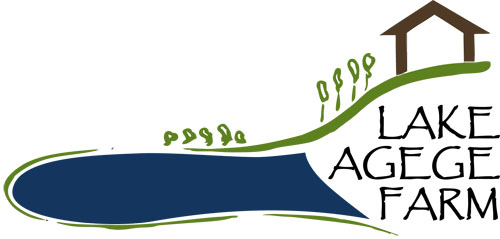As part of the DIVAGRI project, a special form of multiple crop cultivation is to be tested on a test field at Lake Agege Farm.
When intercropping cultivation means normally the cultivation of several rows of one fruit alternating with another, whereby care is taken to leave appropriate tramlines for weed regulation, we are trying to use these tramlines with our cultivation of three plants from different plant genera and to use the specification of plant genera in a targeted manner (see drawing). Cultivation should be done in such a way that subsequent weed regulation can be avoided as far as possible, thereby reducing the maintenance effort in particular.
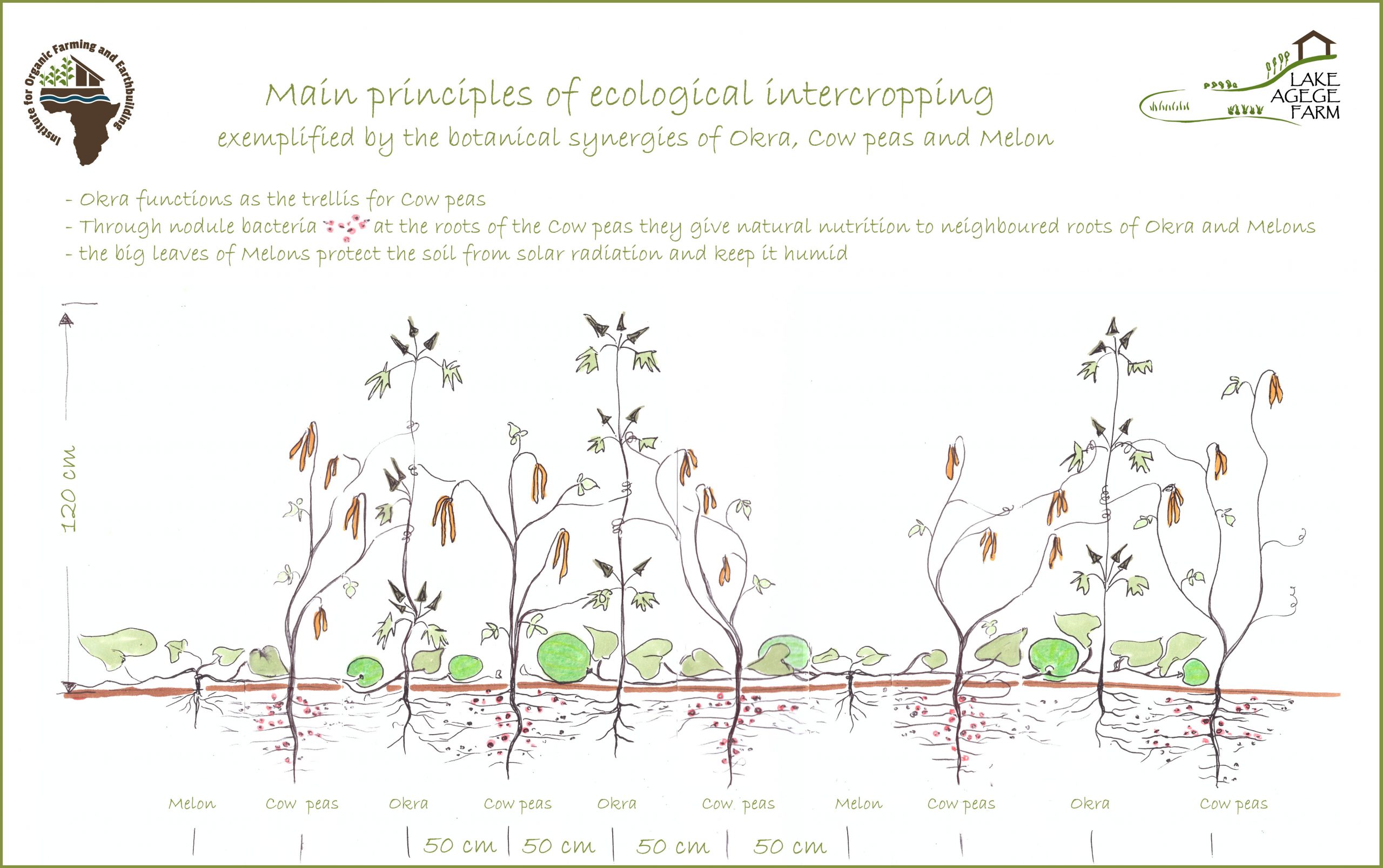
The principle of intercropping at the DIVAGRI testfield of our farm, visualized by Britta Wolff
.
The plant genera are specifically designed to face five problems of tropical plant cultivation on lateritic soil.
- Heavy weeds
- insect infestation
- Rapid desiccation and hardening of the soil
- Fast bush growth
- Rapid decline in natural soil fertility
In our case, a high-growing plant that serves as a climbing aid should form a symbiotic connection with a legume that, thanks to its symbiosis with nodule bacteria, also guarantees natural soil fertility for the two neighboring plants. Beans or peas, which are assigned to this plant genus, climb up the tall plant. This means that they are less likely to be attacked by insects.
The high-growing fruit that was planted first is not affected much in terms of its shape and growth. The roots of this tall fruit can unlock the natural nitrogen for themselves through root connection and amalgamation with the bean or pea. Even the ground cover with large-leaved shoots, such as the melon in our case, or the pumpkin, can unlock this natural nitrogen. The ground cover prevents the loamy soil from drying out and hardening. This allows the roots to anchor themselves more quickly in the soil and reach deeper, wetter regions, so that trace elements such as potassium and phosphate, which regulate the water balance in the plant, are better unlocked for the plant.
For this purpose, by increasing the diversity on relatively small plots that are manageable for small-scale farmers, 1.) the understanding of natural organic farming should be sharpened and 2.) the economic concerns should also be taken into account.
With regard to the first aspect, the increasing use of expensive synthetic pesticides should be reduced through increased understanding of biological and ecological processes. Small-scale farmers usually have no agricultural training, often they have hardly received any schooling, many do not speak English. The proportion of illiterates is high.
The proper use of pesticides is therefore hardly given. When this is regulated by law in Europe, there are almost no legal requirements for it in Africa. Often – as in our case – the pesticides are used in drinking water protection areas with extreme slopes.
.
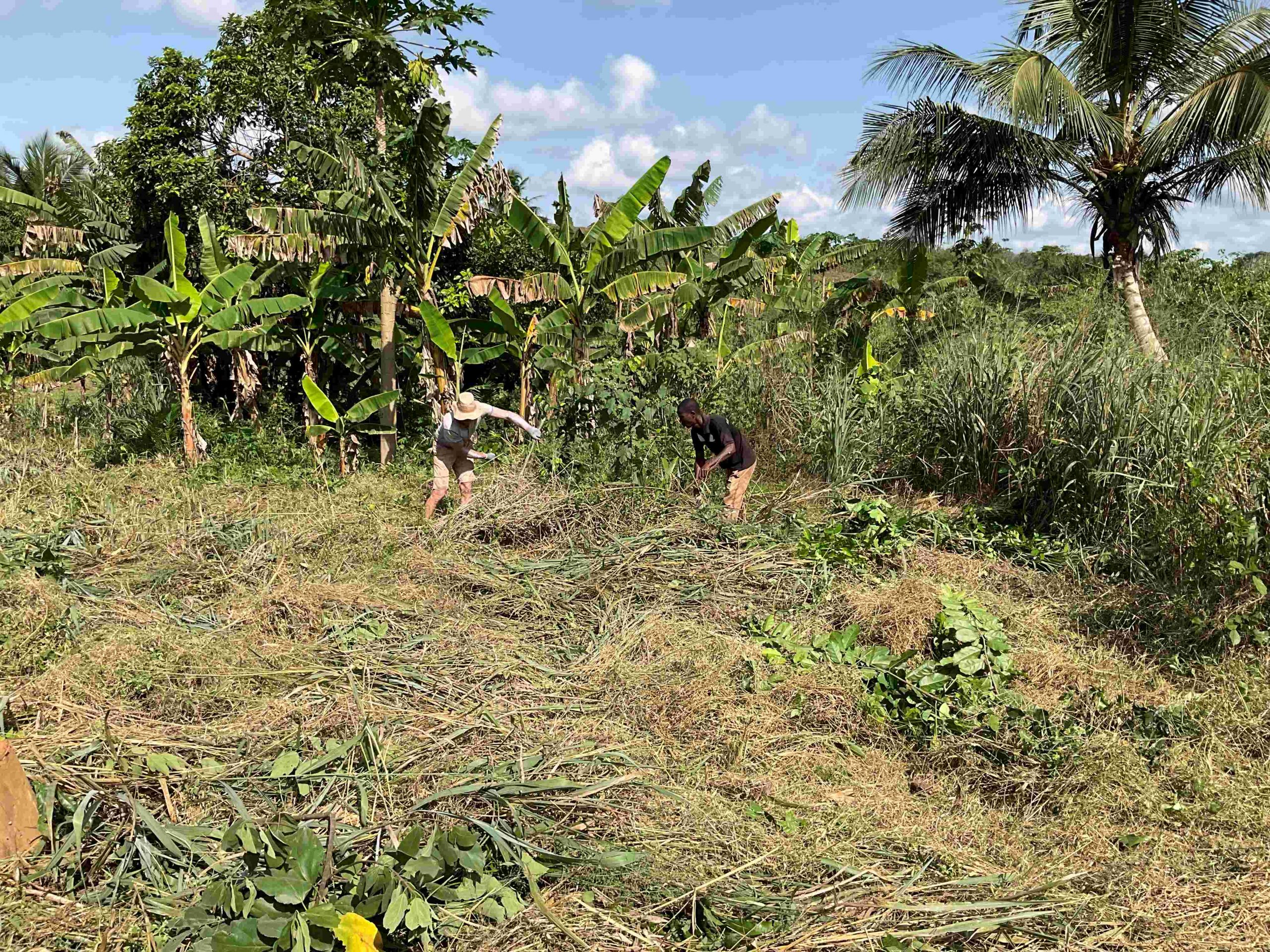
cleaning the bushland with traditional bush knifes
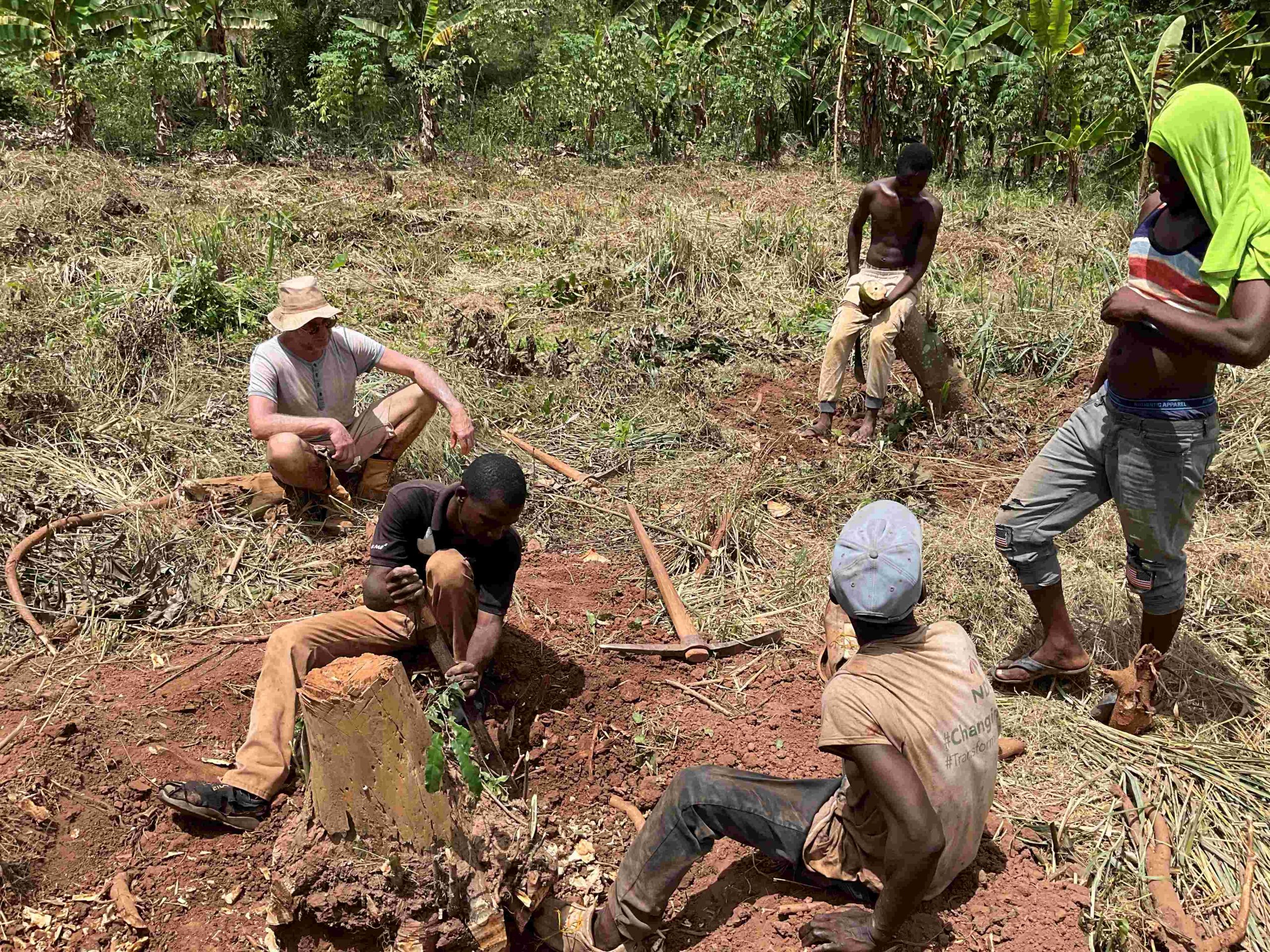
digging out the big roots
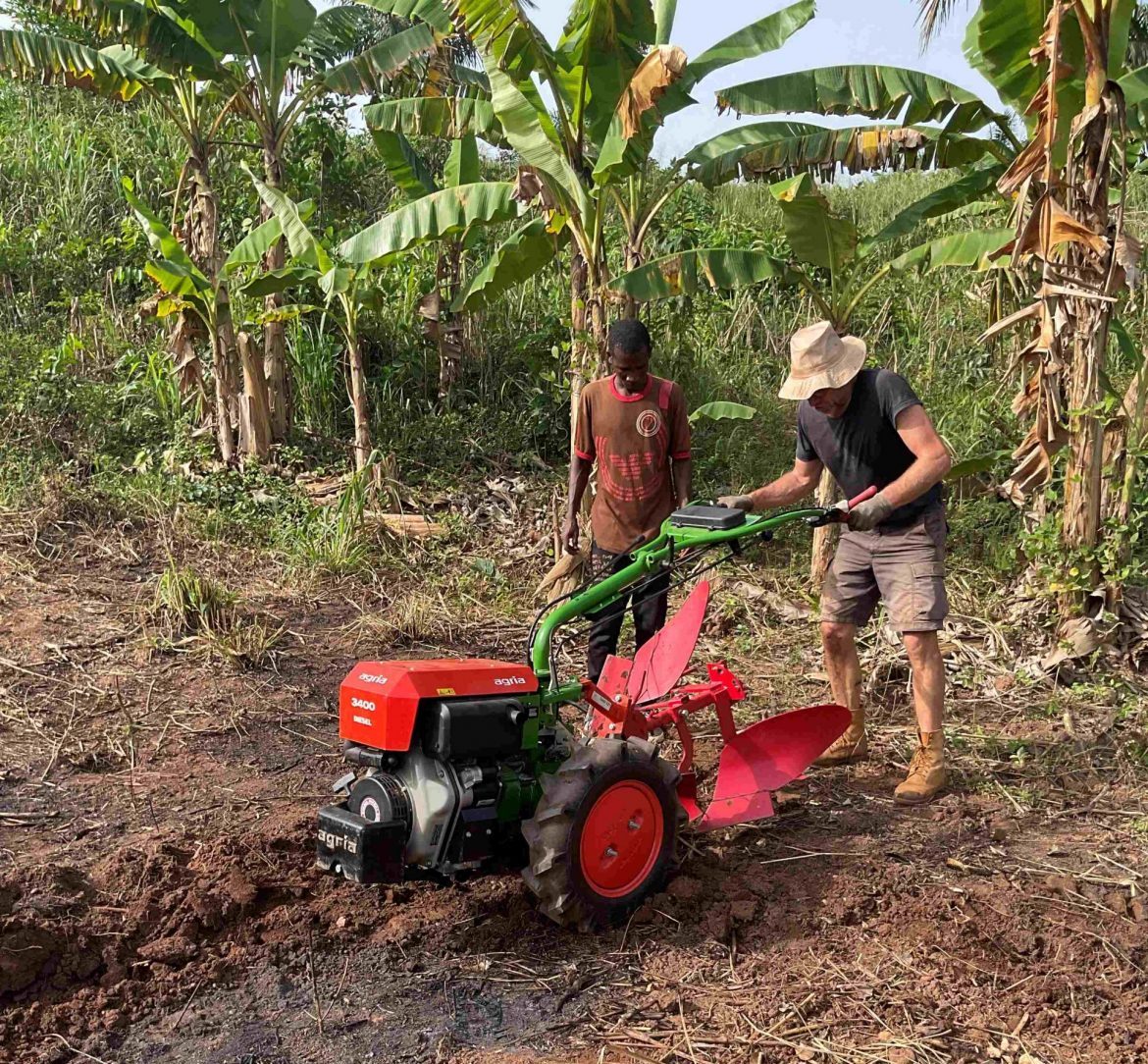
first ploughing tests with the new agria 3400-D machine
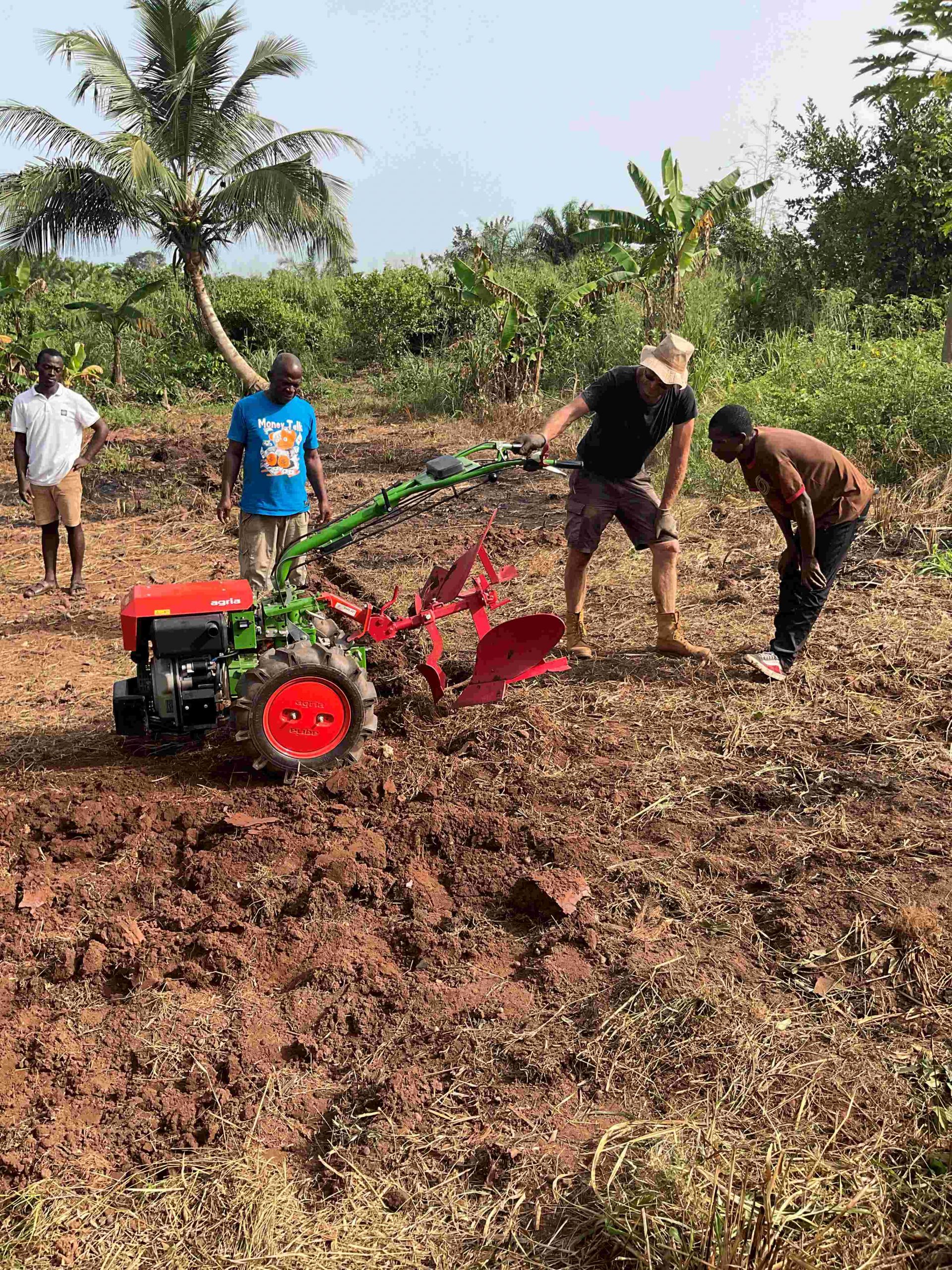
Maik is giving first instructions for the small scale farmers about the usage and special details of the machine.
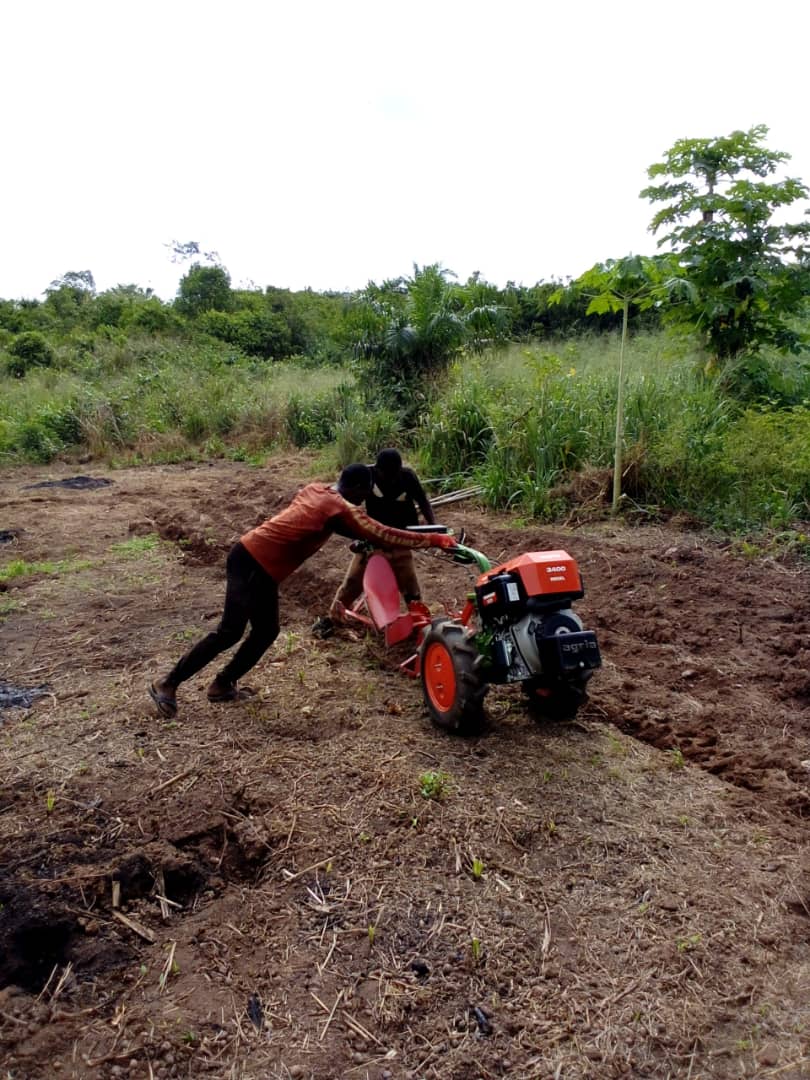
different farmers from the next village Baifikrom wanted to try the machine and their own skills and physical strength.
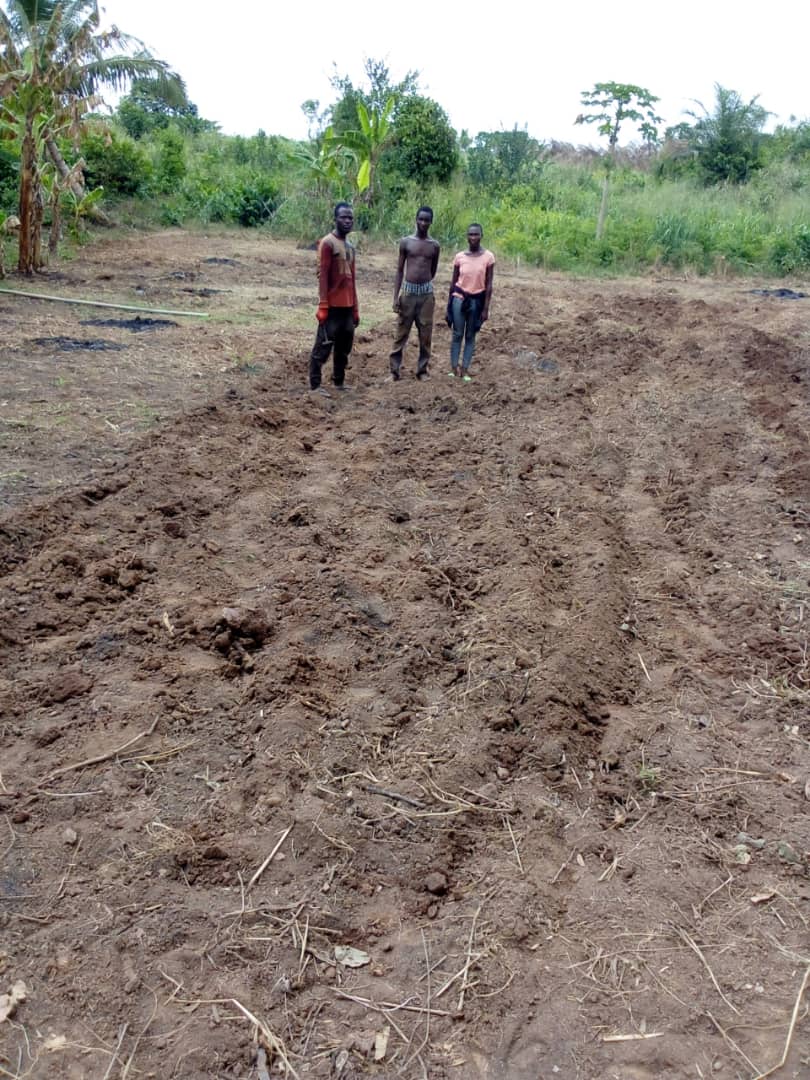
after two days of hard work the whole plot is ploughed and the farmers are satisfied.
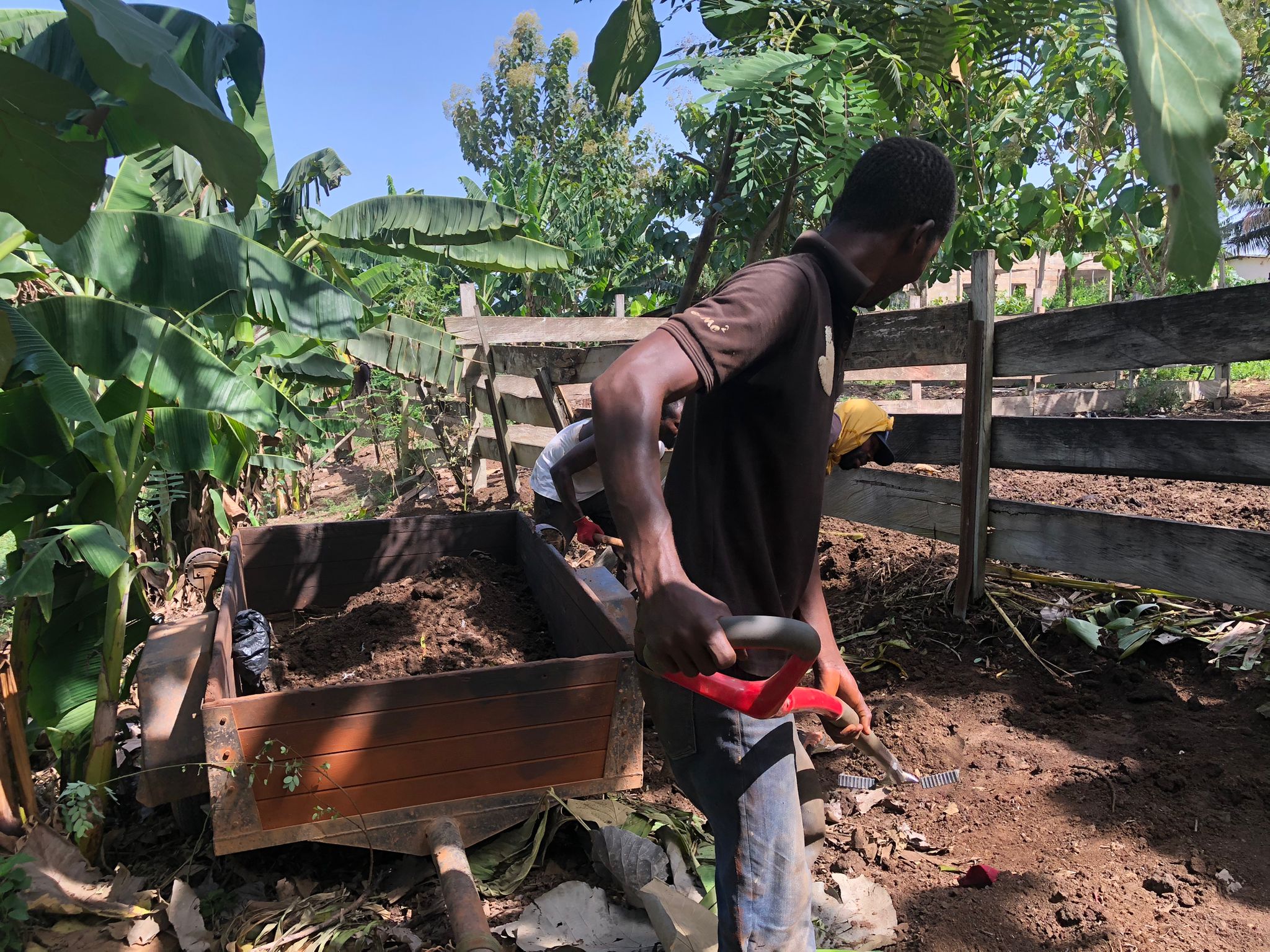
Kofi and our volunteer Luis are picking cow shit from a neighbour.

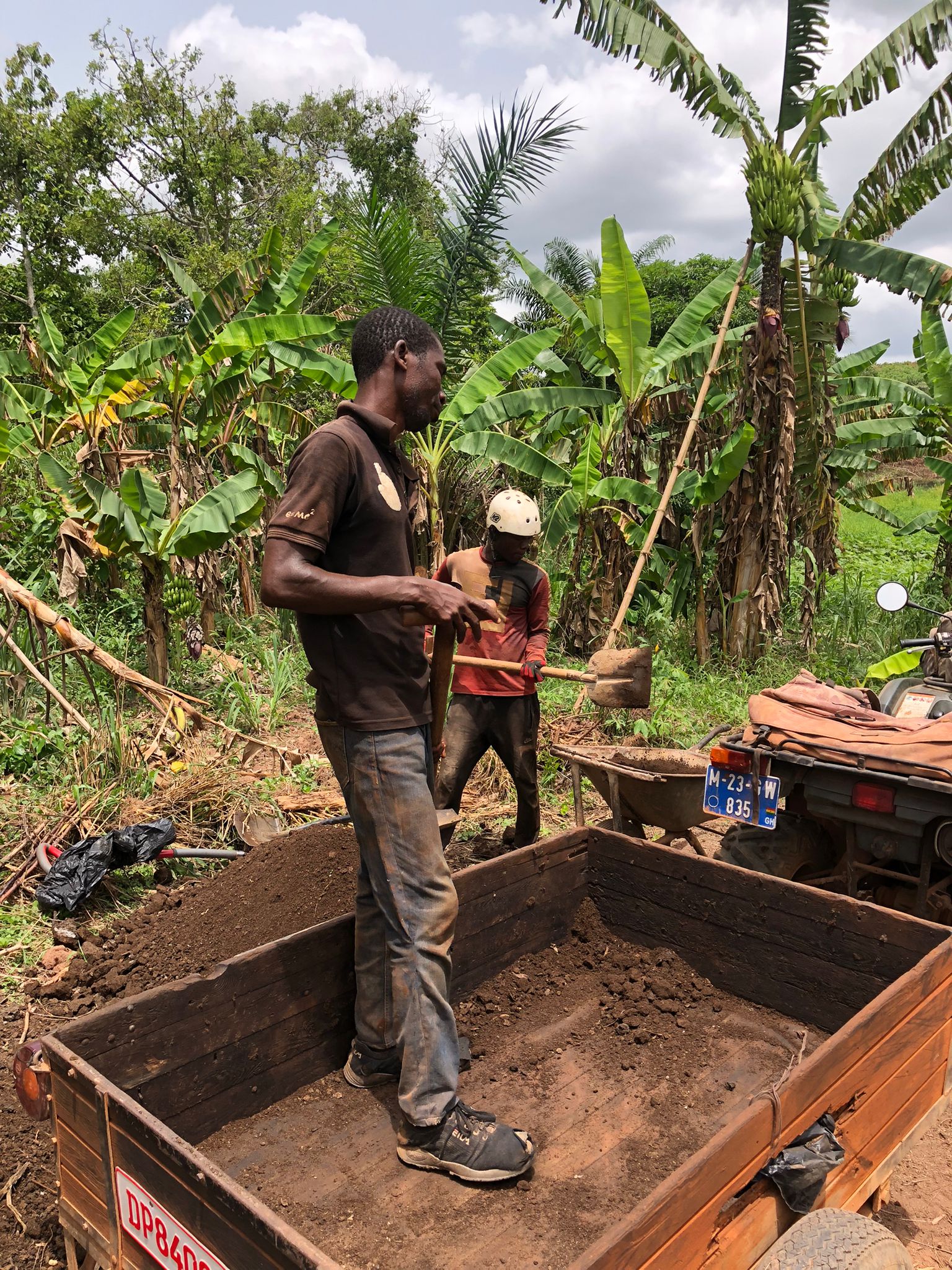
the cow shit acts as a natural and cheap fertilizer for the upcoming plants.
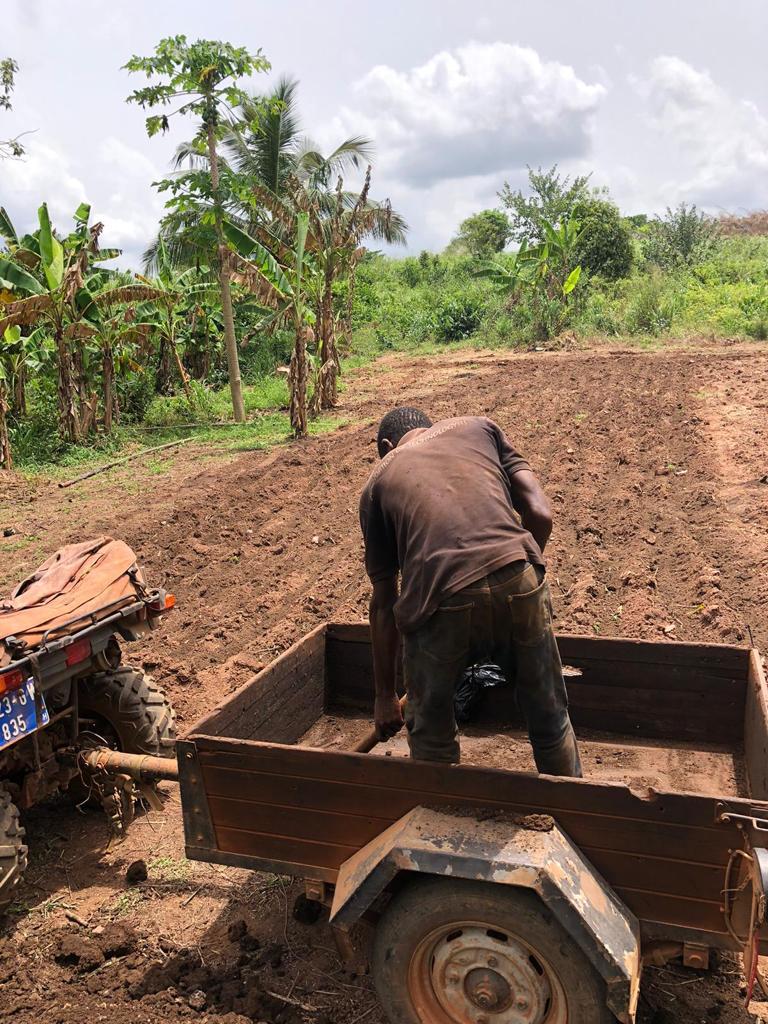
the addition of cow shit increases as well the water absorption capacity of the soil.
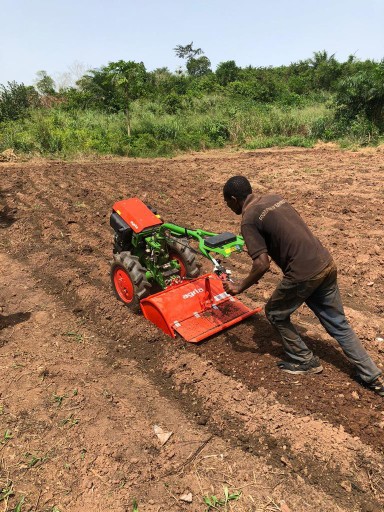
using the vertical hoe device to shred the ploughed soil and to mix the cow shit thoroughly into the soil.
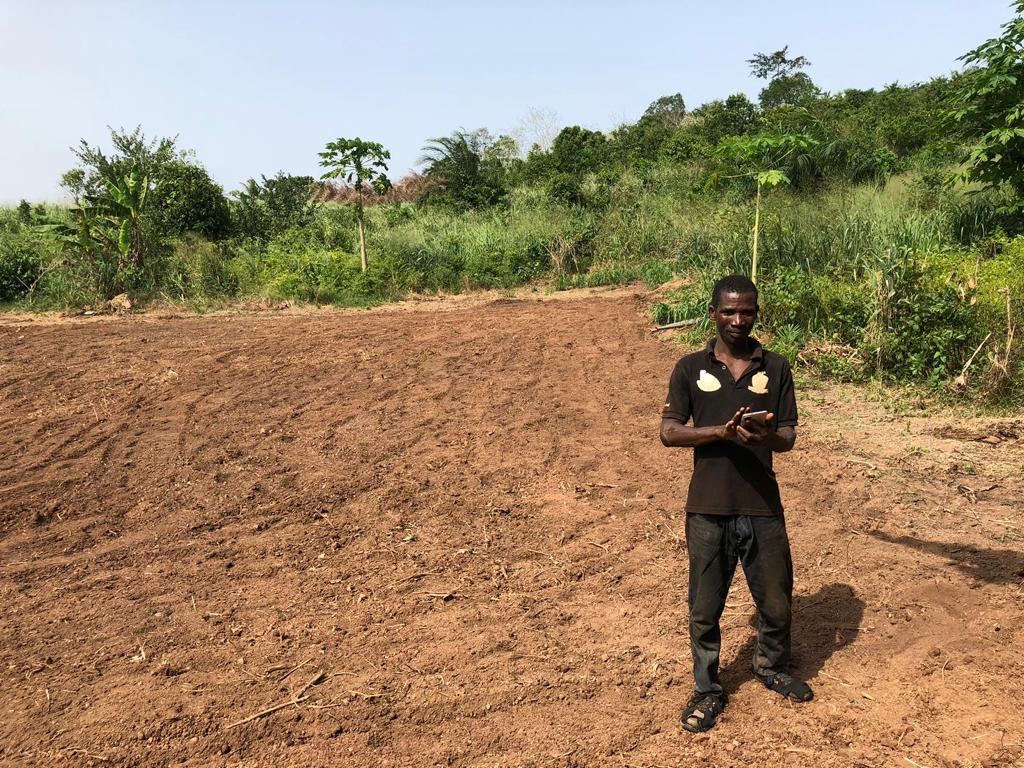
ready prepared plot and a proud farmer (our manager Kofi)
preparation of our new intercropping field
definition of the shape of the field and explanation of the new agria 3400-D machine
explanation of ecological intercropping with ocra, beans and melons; explanation of the usage of cow shit as natural fertilizer …

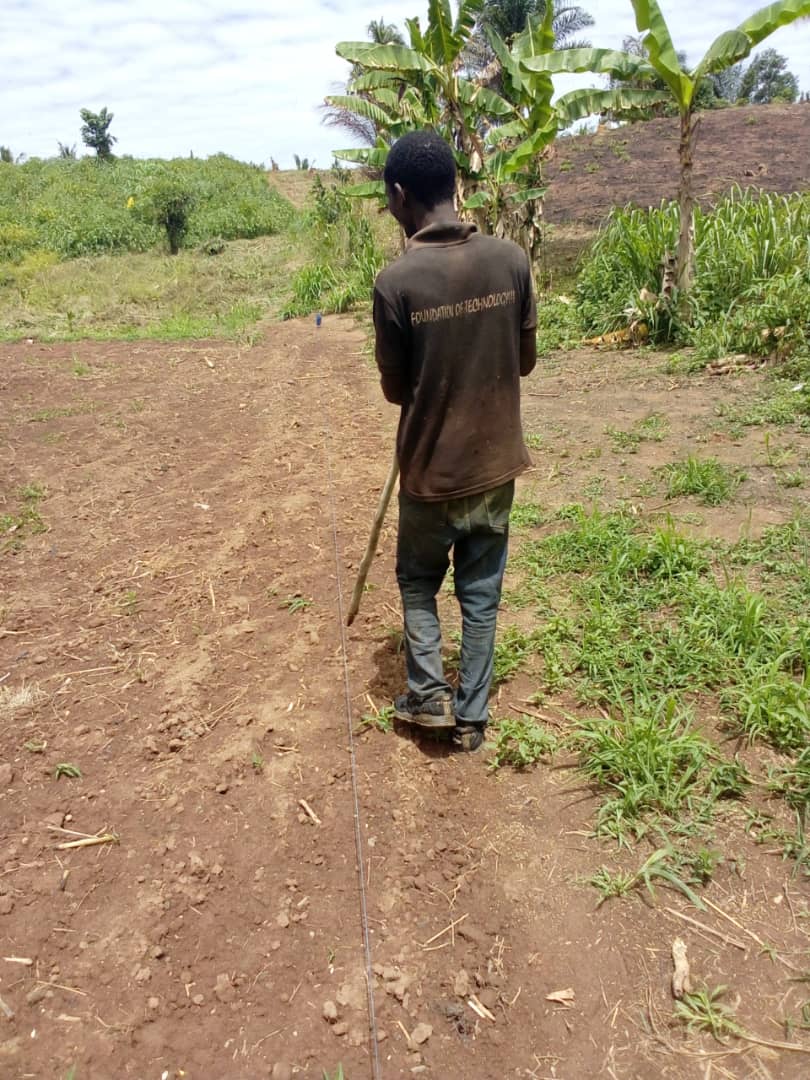
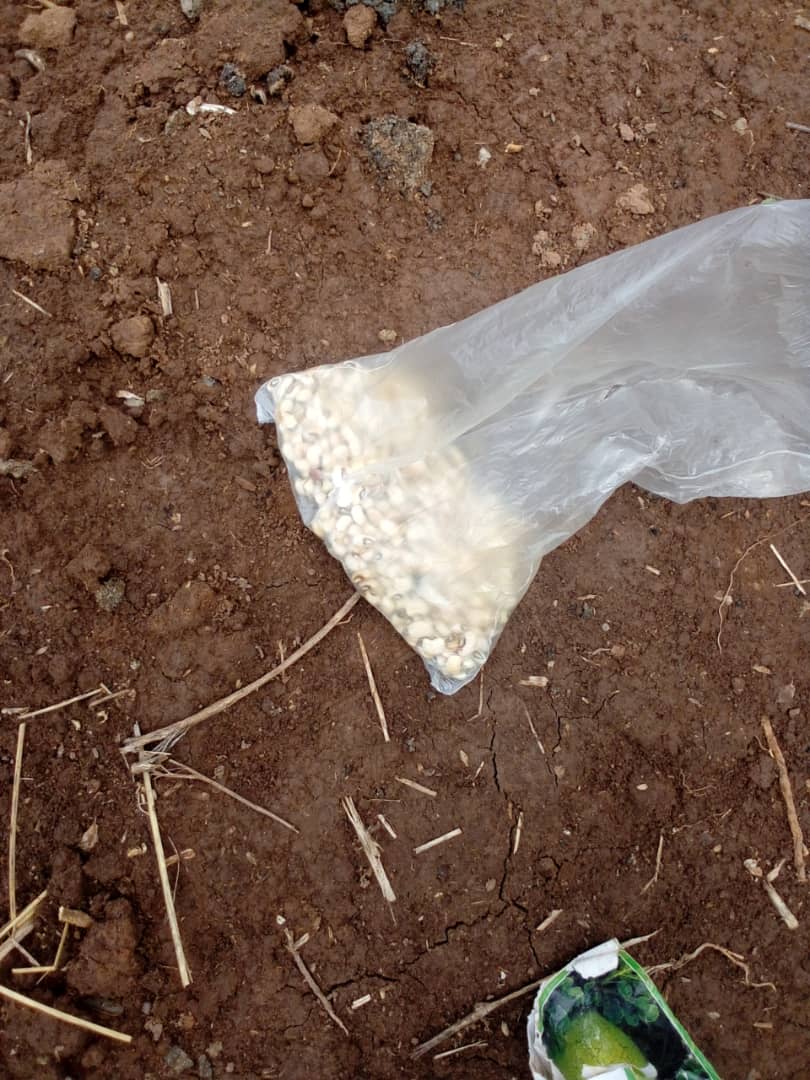
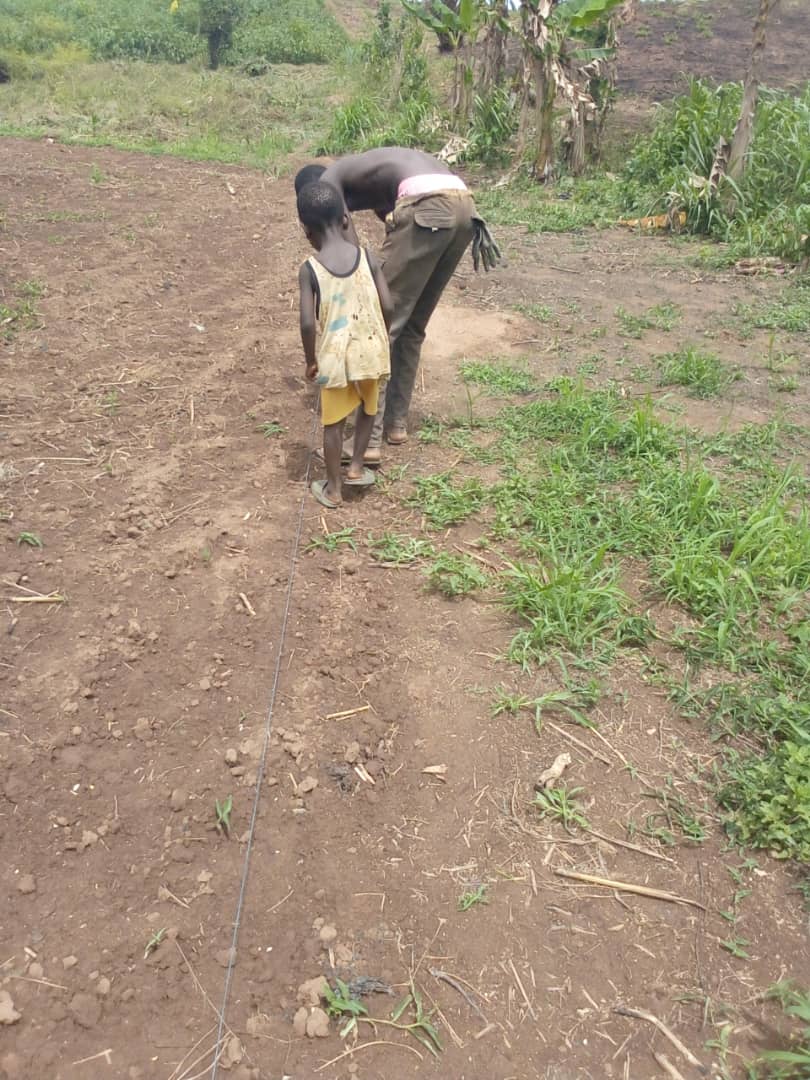
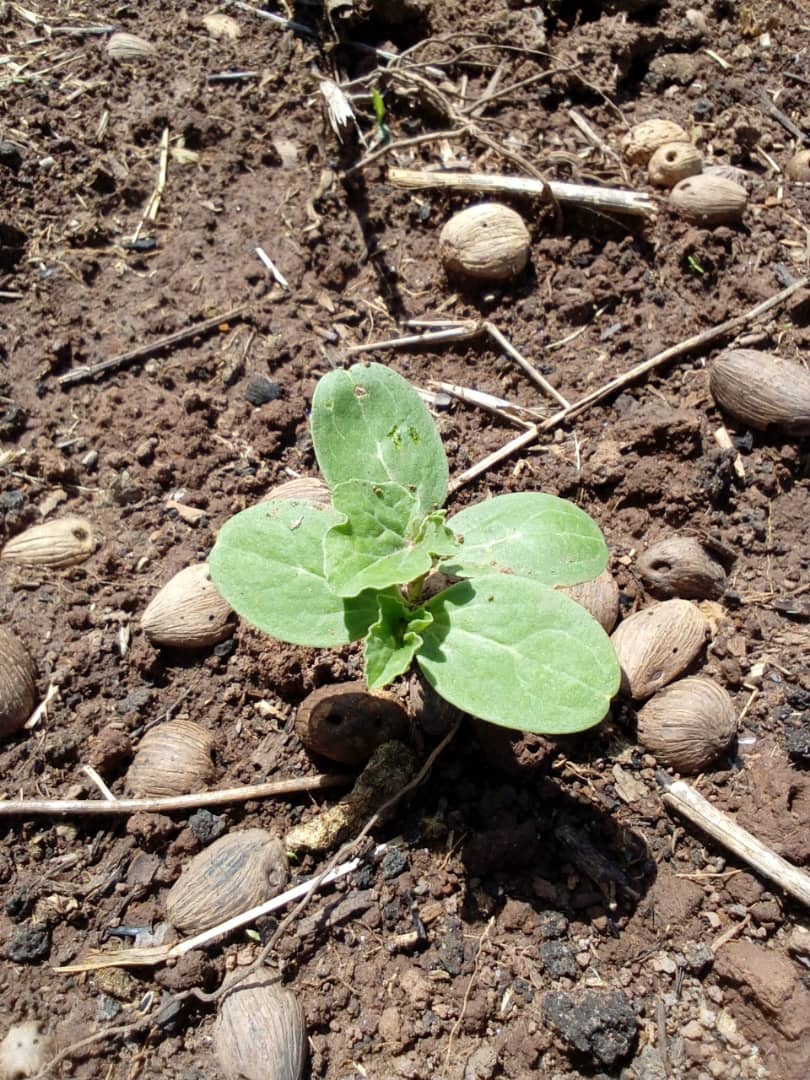
Okra
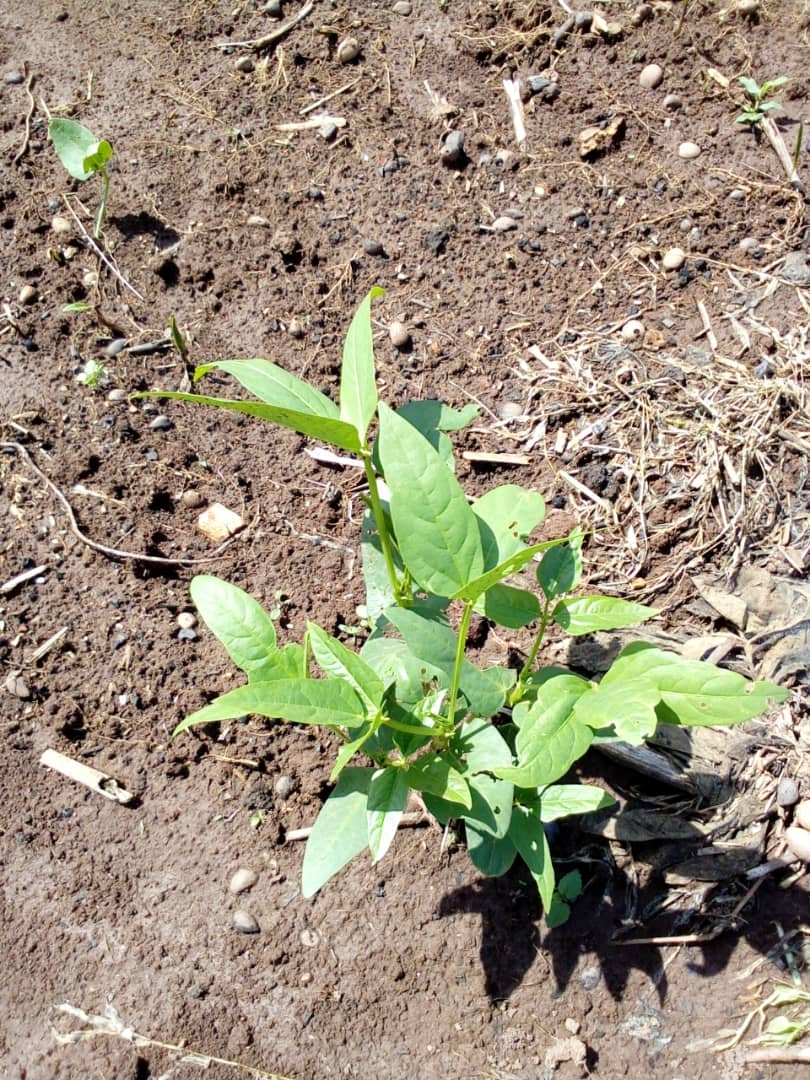
Beans
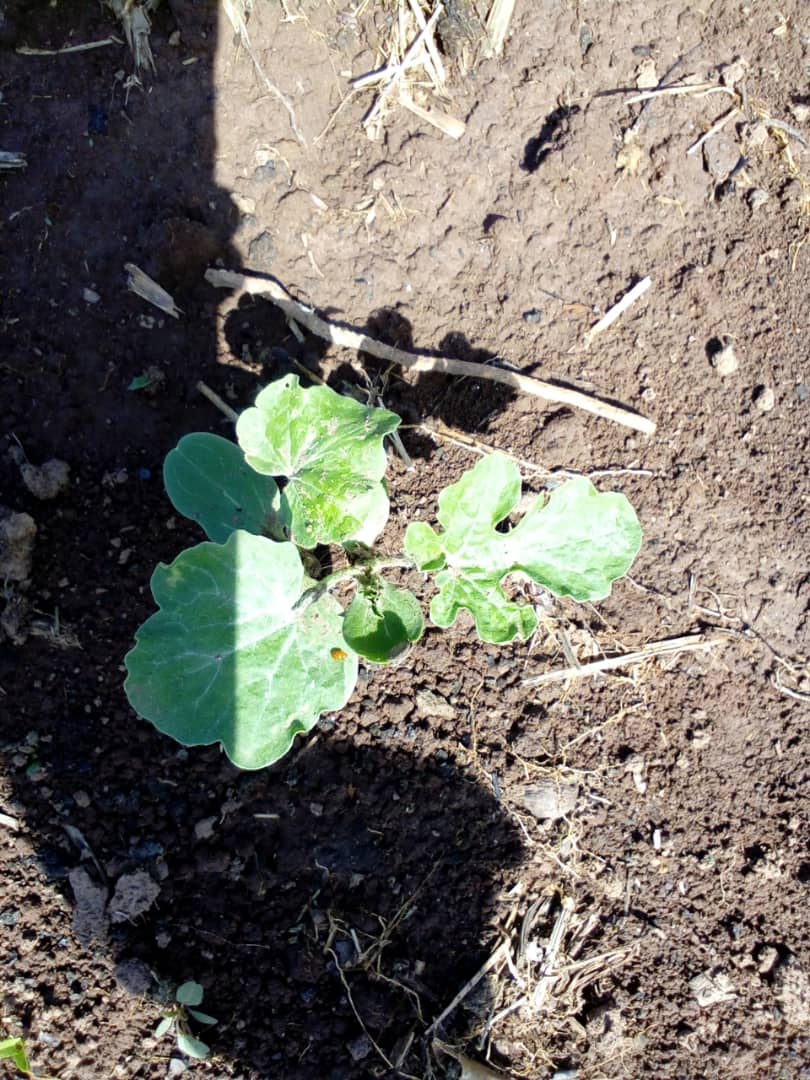
Melon
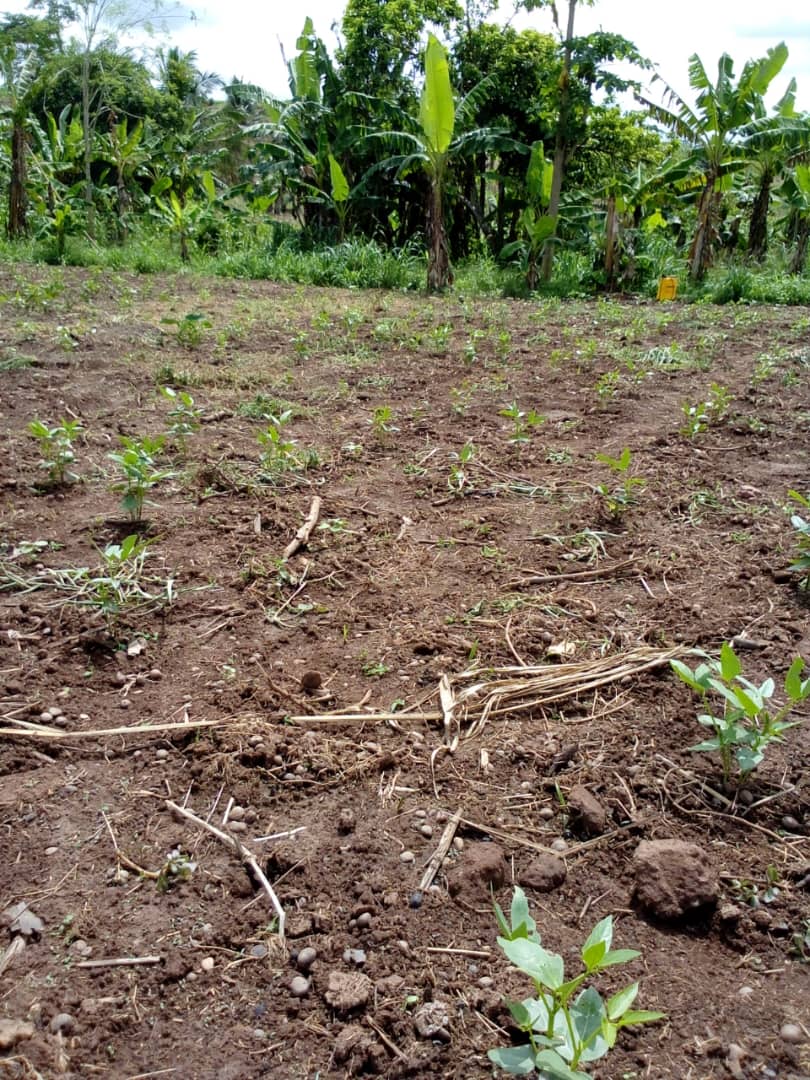
9 days after seeding
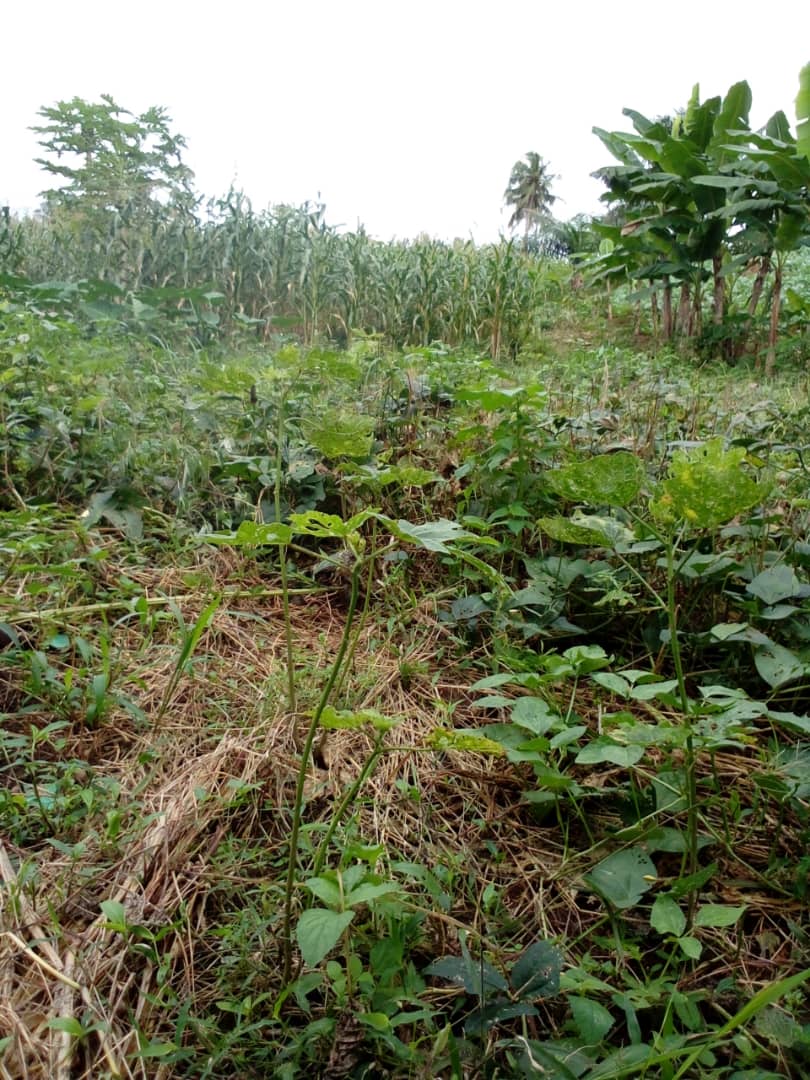
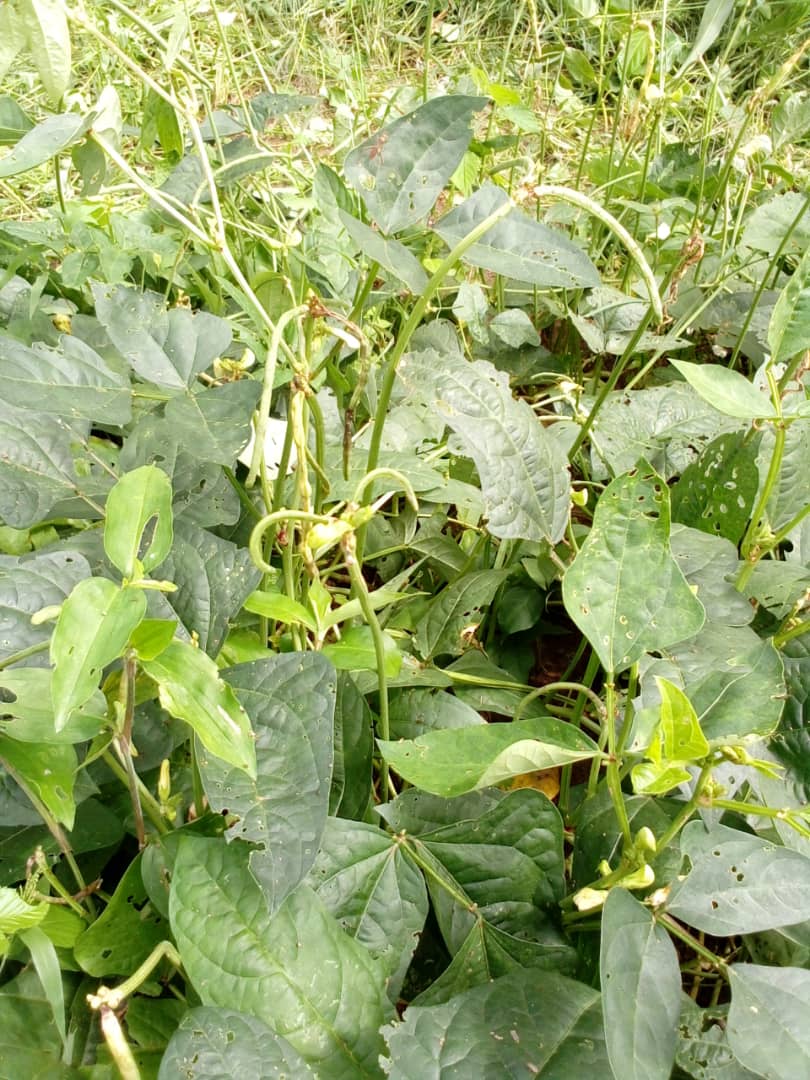
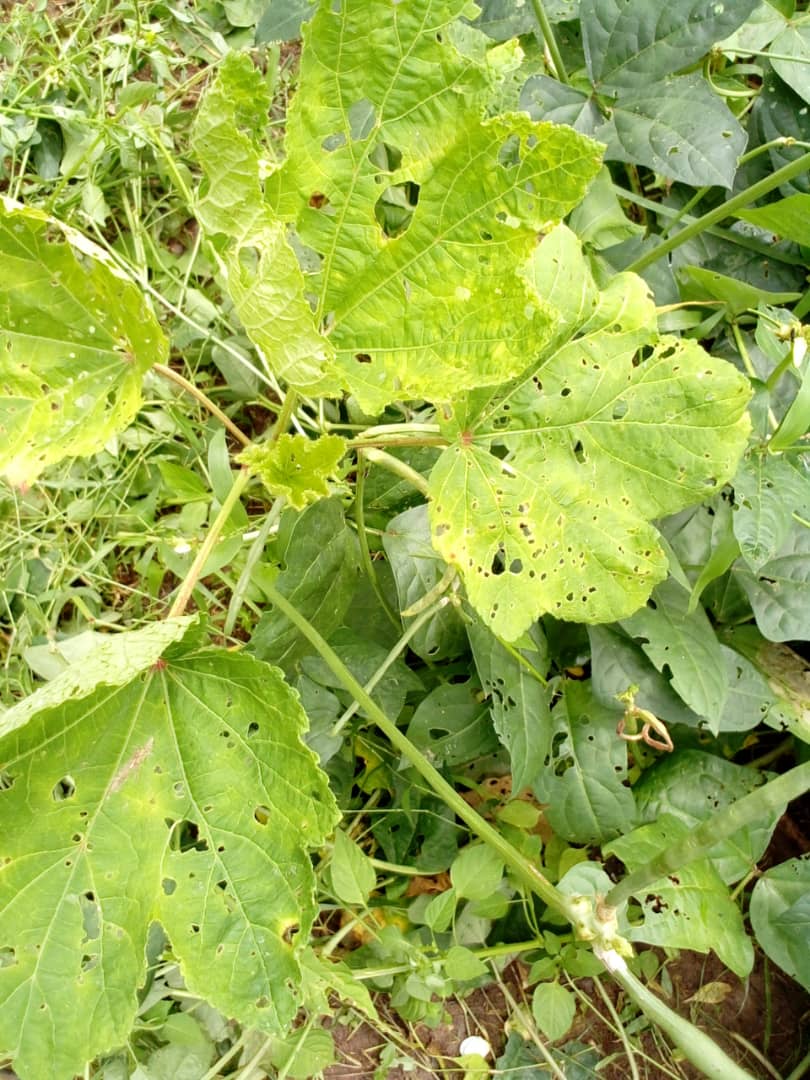

The beans are using the Okra plants as growth support. First Melons are growing.
the intercropping field in the beginning of november 2023: groundnut with beans

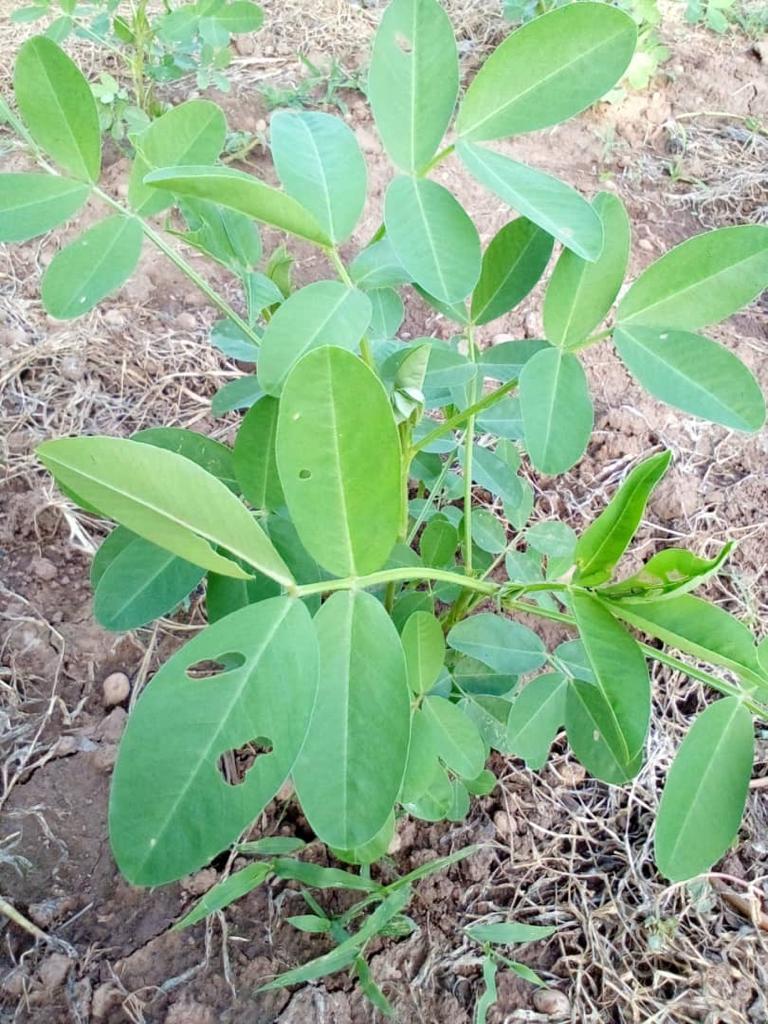
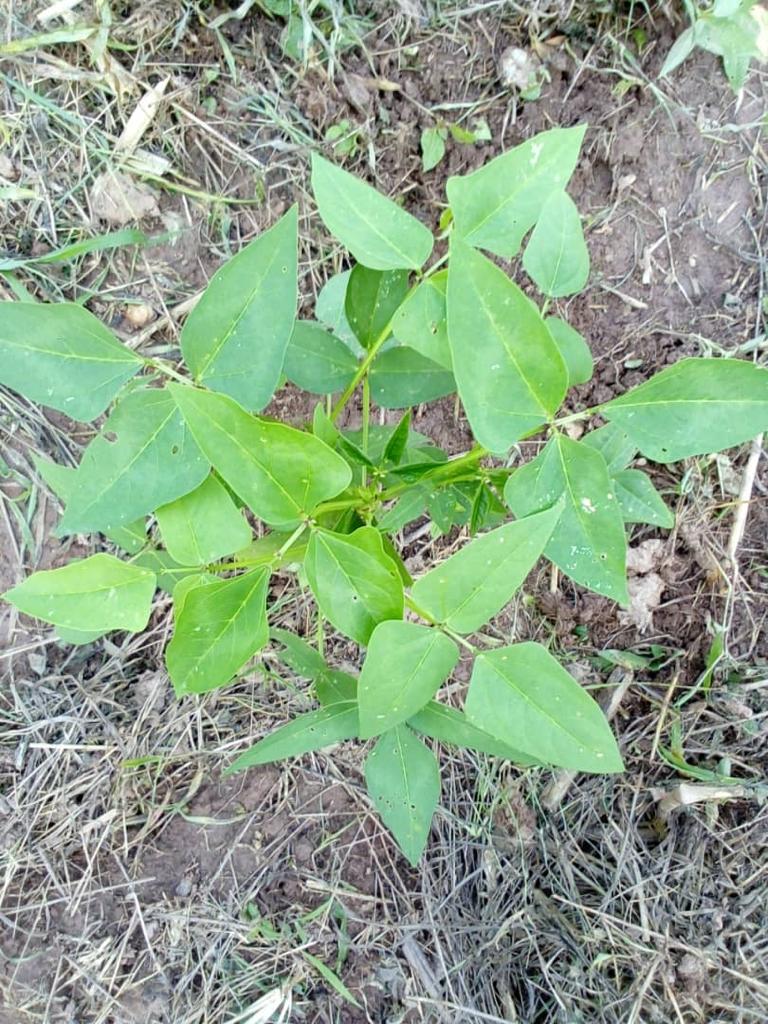
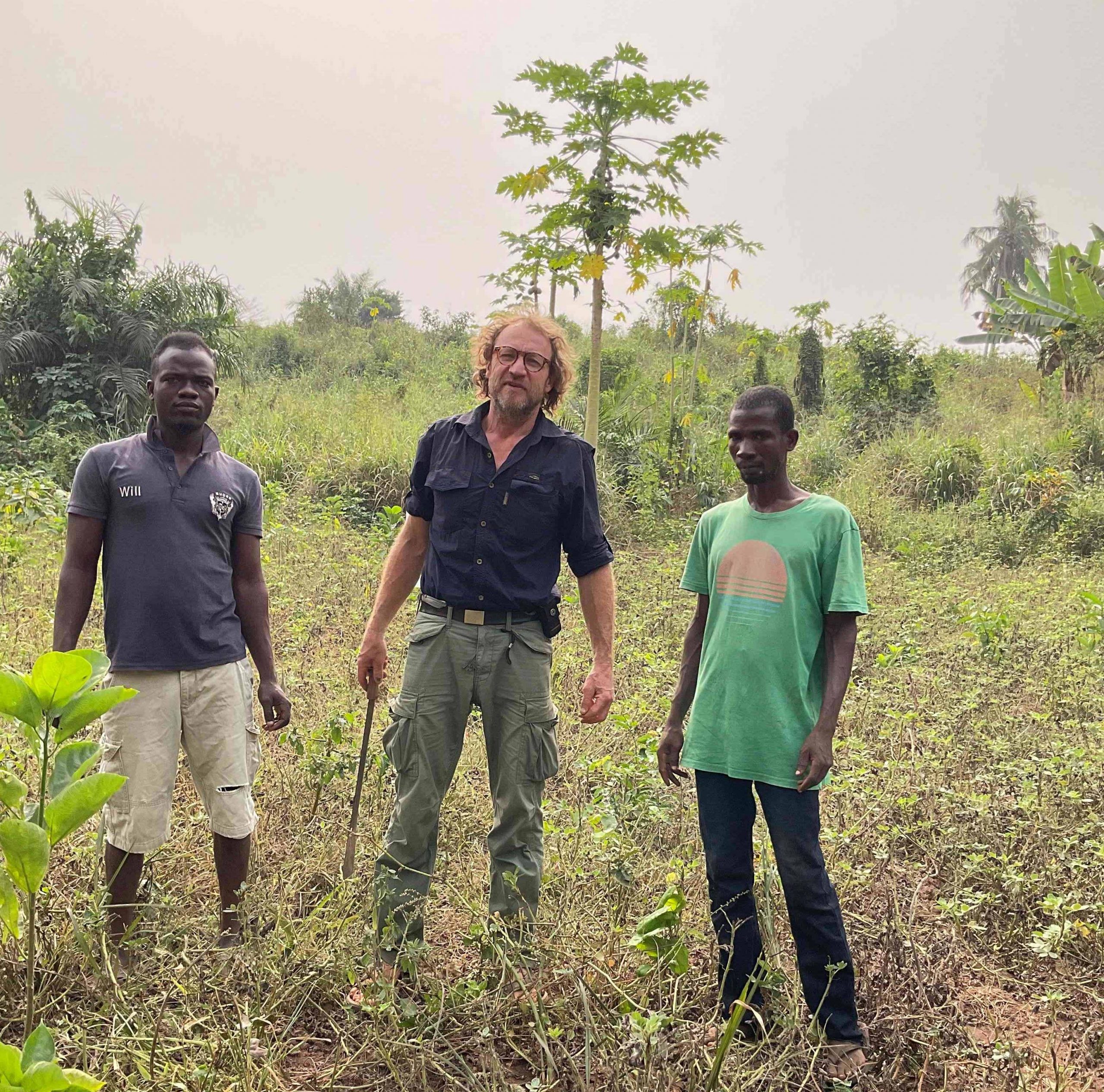
Maik with Apenze and Kofi in front of our intercropping field in February 2024
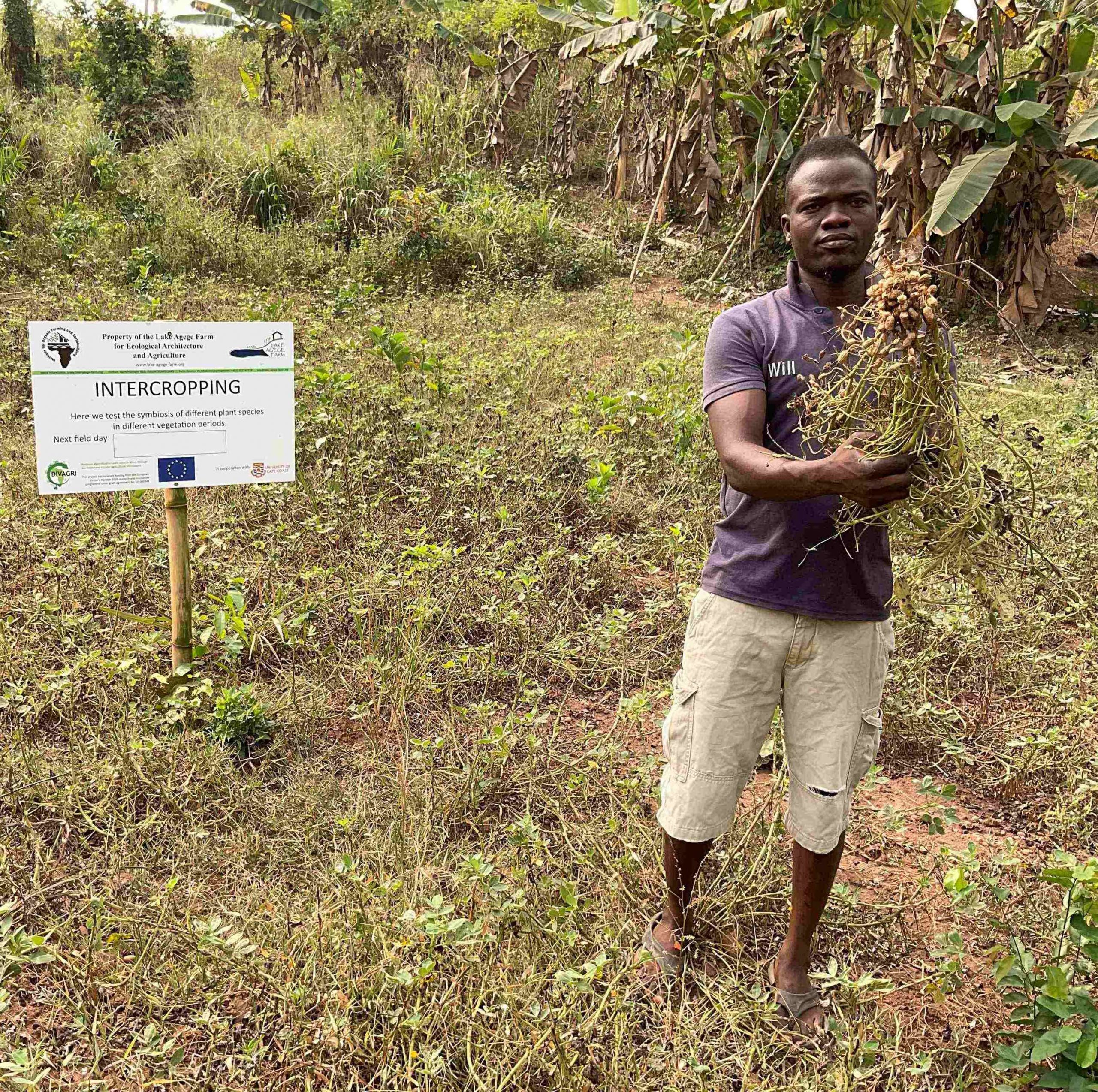
Apenze is presenting a harvested groundnut plant
Maik is explaining the intercropping field principle and shows our next harvest.
As one of our main principles of organic farming is intercropping, we follow this principle as well in our greenhouse!
During the workshop period in december 2024 we demonstrated, presented, explained as well this important topic to all the interested farmers (CoP) from our neighbourhood and some other important Learning Practice Alliance (LPA) group members.

Maik Springmann digs up a cow pea and explains the importance of Rhizobia for the soil

Britta Wolff and Maik Springmann are presenting the different intercropped fruits.

Rhizobia are bacteria that can bind nitrogen in symbiosis with other plants.

How do some animals or fruits show unmistakably, that you should not touch or eat them? Short introduction into the language of nature…
Our innovative organic neighbour farmer Justice Affedzie was very interested in our way of working and asked many good questions!

Maik explains the positive effect of tomatoes intercropped with onions. The onions keep pests like nematods away from the tomatoes!

Cow peas are intercropped with Okro.
